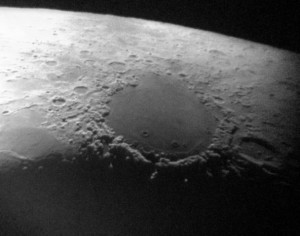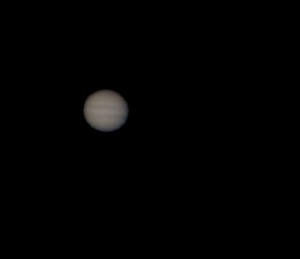March 4, 2014
Viewing with the 28-inch Telescope – 4th March 2014
Report by: Nick Phillips
After a few events where the weather has not been that great and we have spent more time looking at the 28-inch Great Equatorial Refractor rather than through it, it was nice to be able to open the dome and reveal to our members what a great telescope the 28-inch still is today, despite being built in 1893.
Meeting with our astronomer, Tony Sizer, to get the dome ready for our event, the clouds were ominous in the sky, but the weather reports were saying less cloud as the evening went on, so we were very hopeful. We opened the dome and pointed the scope towards the Moon but a thick cloud sat right across it. Looking outside, we figured would have to wait about 10 minutes or so for the cloud to clear, just enough time for me to meet with our members and ask them to join us in the dome.
A short climb up the spiral staircase and into the crisp cool air of the open dome we gathered around the telescope. Tony introduced himself and explained the hazards of hitting your head on a well-built Victorian telescope, or falling down the pit of doom into the office below (which he didn’t have a key for!), before telling us that the cloud had cleared and that the Moon was looking great through the eyepiece. Tony was not wrong. Our first target of the evening, the Moon, looked a treat. The Moon was around 15% lit and in the eyepiece we saw Mare Crisium (The Sea of Crises) with the terminator (the division line between the illuminated and dark parts) just on the western edge of the mare basin.
Mare Crisium is a lunar basin, a large area of which was flooded by the impact of an asteroid billions of years ago. The flooded lava floor is oval in shape and with an east-west direction of around 350 miles and the north-south direction around 270 miles it can be seen with the naked eye.
This is the only major mare that is not connected to the great mare system, and walls of massifs surround the basin floor many thousands of feet high. There are many wrinkled ridges, small hills and flooded craters scattered around the sea, concentrating mainly around the edge. All of which looked great through the 28-inch. Everybody got the opportunity to have a good look and after everybody got a chance at the eyepiece. A few tried to take some pictures with their smart phones, with my attempts shown on this page.
Our second target of the evening was Jupiter, the fifth planet from our Sun and by far the largest in our solar system. It contains over twice as much matter as all the other planets put together. 11 times the diameter of Earth, it is composed of mainly of hydrogen and helium. It has no solid surface and for this reason is the first of our gas giants. Depending on our relative positions in orbit around the Sun, Jupiter is between 350 and 600 million miles away from Earth. It is around 480 million miles from the Sun and takes nearly 12 years to complete one orbit. Despite its size, it is the fastest rotating planet, taking just 10 hours to complete one rotation. Through the 28-inch we got a great view of Jupiter, with the brownish stripes of the equatorial bands and its 4 Galilean moons: Io, Europa, Ganymede and Callisto. As a real treat, the Great Red Spot (perhaps Jupiter’s most iconic feature, a storm that has been raging for more than 400 hundred years, with wind speeds up to 425mph) was also on show.
Sadly, as always, the evening had to come to an end and although we have to close up the dome and head home for the evening, it was great to see so many smiling faces.
iPhone Images Taken Through the Eyepiece of the 28-inch Telescope (by Nick Phillips):
Posted under: 28-Inch Equatorial Viewing, Flamsteed, Meeting Report





You must be logged in to post a comment.